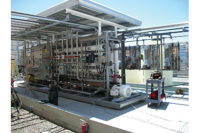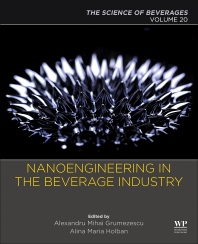Integrating LEED in design
Lighting solution suits environment, offers energy savings
Attaining Leadership in Energy and Environmental Design (LEED) certification is a goal for most owners facing a major construction project. An internationally recognized green building certification system developed by the U.S. Green Building Council, LEED advances sustainable building and development practices through a rating system that recognizes strategies for environmental and sustainable performance. For food and beverage facilities, however, LEED certification presents challenges.
Food and beverage facilities with large process loads, blow molding operations or injection molding operations likely will be hard-pressed to achieve LEED certification because of the amount of energy these processes consume. The Energy and Atmosphere category is 31 percent of the LEED certification scorecard and has a minimum energy performance prerequisite that also must be met. This makes it one of the most challenging categories to fulfill for any manufacturing facility seeking LEED certification.
LEED focuses on green buildings and not green processes. The LEED energy model requires process loads to be input as a contributing factor to a building’s energy performance. The model’s formulas analyze energy reduction between a theoretical baseline case and the actual design.
In a beverage processing environment, a majority of energy usage relates to process energy, which is essentially a non-variable component in the standard LEED energy model. Office, storage, and non-process mechanical, electrical, and plumbing systems are typically a small slice of the energy pie. This large non-variable process component creates a model outcome with little difference between theoretical and actual design cases. In many cases, this is less than the prerequisite requirements for LEED certification. Manufacturers are unfairly penalizing their building design for process loads.
To mitigate this challenge, a non-standard model allows projects to use an “exceptional calculation method” to demonstrate energy savings. This means a manufacturer must prove its new facility has “a uniqueness” to its process that reduces energy between the theoretical base case and the actual design.
Other challenges facing food and beverage facility construction projects include the following:
• Large food and beverage facility parking lots cannot minimize the non-roof heat island effect without significant cost.
• Wastewater reduction, such as implementing a gray water system for non-potable water, can be cost prohibitive.
• Natural lighting in 75 to 90 percent of manufacturing spaces (a LEED credit) would require a significant amount of skylights to meet the minimum allowable foot-candle levels in operational spaces. These openings also can lead to leaks and maintenance issues over time.
• Increasing the volume of outdoor air in large production spaces to improve air quality (above ASHRAE requirements) decreases energy efficiency.
• Individual HVAC and lighting control systems are not practical in large, open manufacturing spaces with potentially small employee pools.
Road map to certification
Given these challenges, where can food and beverage construction projects gain LEED ground? Beginning with site development, the following are some common areas to emphasize during engineering design and construction activities:
• Incorporate alternative transportation considerations into site development.
• Reduce stormwater quantity and improve stormwater quality through sustainable civil design.
• Reduce domestic water usage with low-flow fixtures.
• Source construction materials through manufacturers located within 500 miles.
• Include passive ventilation and cooling, heat recovery from process loads, energy recovery units, and thermostatically controlled exhaust systems for an energy-efficient HVAC system.
• Incorporate mechanical systems with VFD controls and energy-efficient motors.
• Design a “cool roof,” a roofing system designed to provide solar reflectance.
• Incorporate sustainable construction activities such as waste management and air quality management.
These items are likely to have higher initial costs, but they will result in lower overall lifecycle costs. Bundled together, they will probably provide almost 40 points for certification, which is the baseline for certification.
What’s ahead?
If the U.S. Green Building Council develops a specific LEED rating system for manufacturing — as it has for schools and core and shell projects — the pathway to certification should become more realistic. The traditional scorecard focus areas listed should be weighted differently to make the largest impact for sustainable manufacturing sites. The focus will become the two areas where manufacturing impacts the environment: water and energy. BI
Looking for a reprint of this article?
From high-res PDFs to custom plaques, order your copy today!








